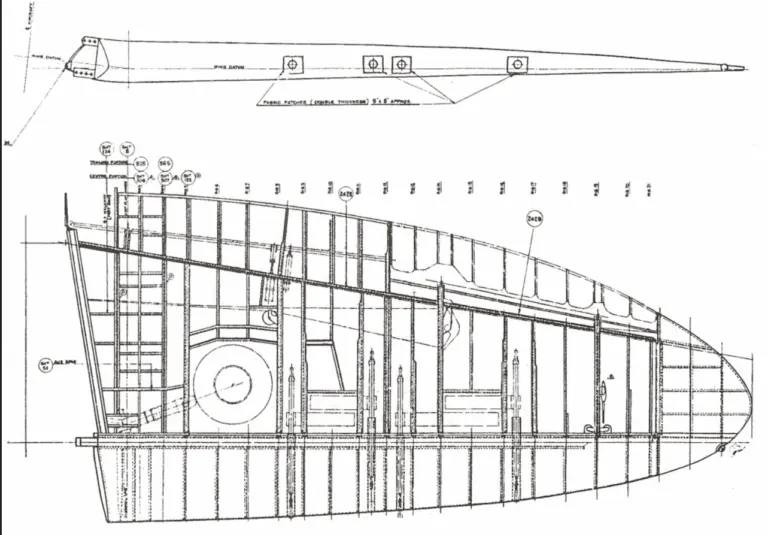
The Aerodynamics of the V-bombers – Part 4
Dr Steve Liddle CEng FRAeS, is a Vulcan to the Sky Trustee and Principal Aerodynamicist at Aston Martin Formula One Team. The articles here are
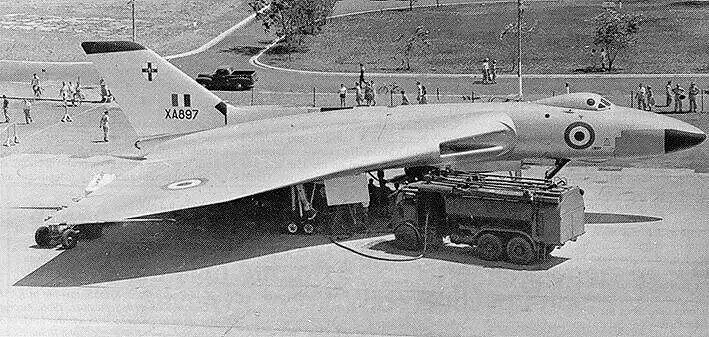
On Saturday 30 August 1952, history was made as Avro Type 698, VX770, took to the sky for the first time. It was the prototype for the Avro Vulcan and the birth of this iconic aircraft.
Vulcan VX770 wasn’t the finished article which would eventually enter RAF service. With its pure delta wing, the prototype aircraft made the first flight fitted with only the first pilot’s ejection seat and a conventional control wheel. It was powered by four Rolls-Royce RA.3 Avon engines of 6,500 lbf thrust, as the intended Bristol Olympus engines were not available. VX770 had fuselage fuel tanks but didn’t have wing tanks, so a temporary additional tank was carried in the bomb bay.
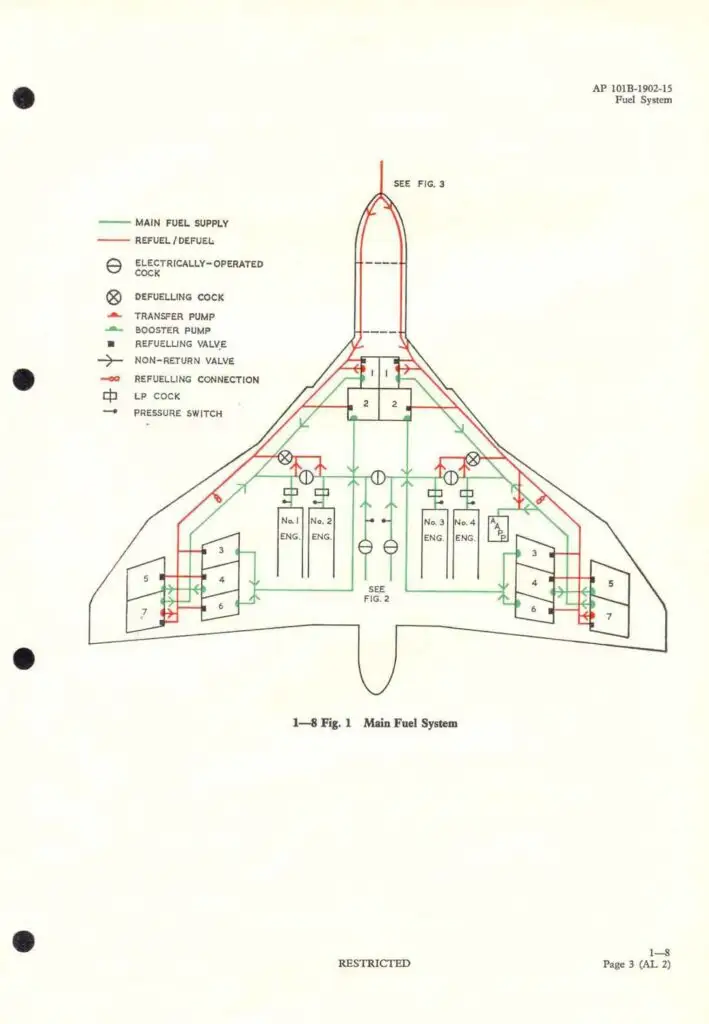
By January the following year, VX770 was grounded for the wing fuel tanks to be installed along with Armstrong Siddeley ASSa.6 Sapphire engines of 7,500 lbf thrust and installation of other systems. VX770 flew again in July 1953.
Vulcan VX777 was the second prototype and first flew on 3 September 1953. The aircraft was more representative of production aircraft. Some of the differences were;
Like the first prototype, VX777 had the original pure delta wing.
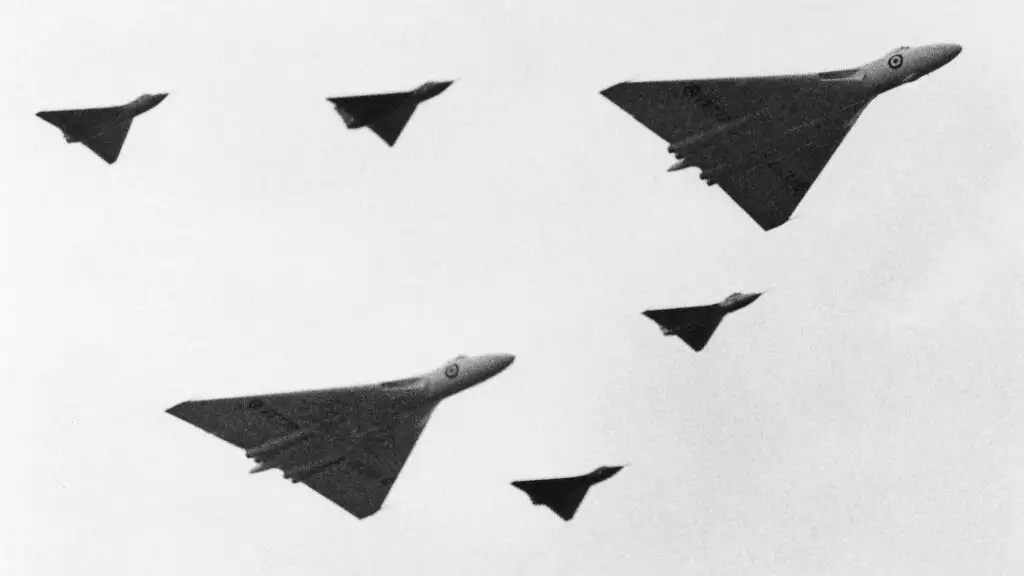
During the next three years the prototype aircraft continued trials with Avro and the Aeroplane and Armament Experimental Establishment (A&AEE) at Boscombe Down, along with XA889, the first production Vulcan.
In March 1956, Vulcan XA889 underwent acceptance trials for the aircraft type’s Certificate of Airworthiness at the A&AEE. The Vulcan was cleared for entry into RAF service on 29 May 1956.
On 20 July 1956, Vulcan XA897 became the first B.1 to enter RAF service, joining 230 Operational Conversion Unit (OCU) at RAF Waddington. The following extract from the Vulcan to the Sky Trust’s Avro Vulcan Anniversary book tells the story of the very short career of this particular airframe.
Extract from Avro Vulcan Anniversary Book
Several of the initial production batch had been allocated to development and testing programmes and in fact, 230 OCU only had their hands on XA897 briefly before it was returned to Woodford for modifications and replaced by XA895.
The reason for XA897s withdrawal soon became clear. The modifications included the installation of bomb-bay fuel tanks, increasing the aircraft’s range by 700 miles. On 9 September 1956 it took off from Boscombe Down for the long flight to New Zealand and Australia to take part in a display for Air Force Commemoration Week.
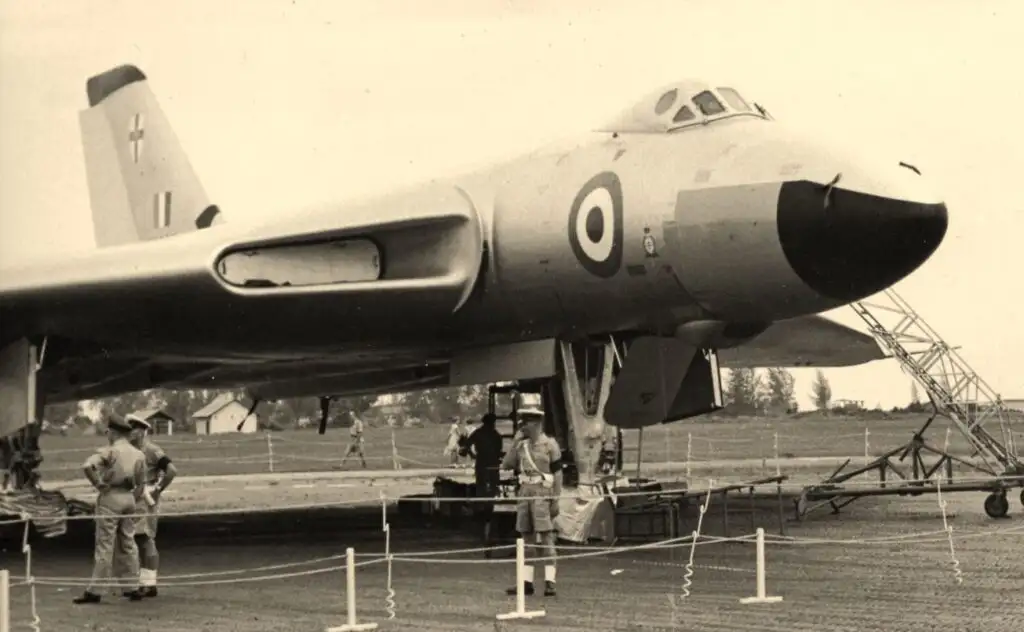
The trip was viewed as a valuable opportunity to promote and prove the aircraft, being the first long-range flight the Vulcan had undertaken. A crew hand-picked for their experience and skill had been assembled, captained by Squadron Leader Donald Howard, with the Commander in Chief of Bomber Command, Air Marshal Sir Harry Broadhurst as co-pilot. All the remaining three RAF crew were Squadron Leaders, with one civilian aboard, Avro technical service representative Frederick Bassett. The outbound flight went smoothly, with the 11,475 mile distance to Melbourne covered in 47 hours 26 minutes including stopovers at Aden and Singapore, a total flight time of just 23 hours 9 minutes. Broadhurst took the opportunity to point out to Australian ministers that neither their front-line fighter, the American Sabre, nor any similar type would be able to catch the Vulcan!
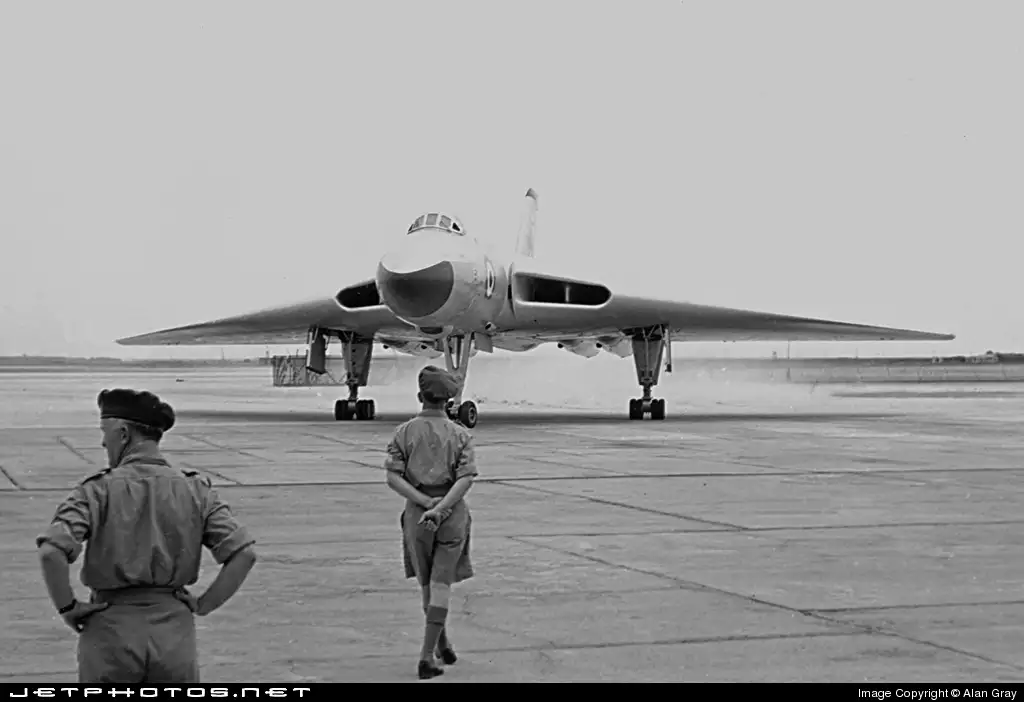
After visits to Sydney, Adelaide and Christchurch New Zealand the long return flight began. In the early morning of 1 October the Vulcan departed from RAF Khormaksar in Aden on the last leg, Broadhurst in the co-pilot seat and alternating with Howard at the controls. A VIP reception at London Heathrow Airport eagerly awaited the arrival, though poor weather surrounded the area with rain and mist. The first thing the waiting crowds were aware of was the sound of a burst of full power, followed by the Vulcan climbing steeply to about 800ft, where the cockpit canopy released and the two forward crew ejector seats fired. The aircraft then dived to starboard, crashing on the edge of Runway Four where it exploded on impact, killing the four rear crew members.
What had started out as a demonstration of the new aircraft’s capabilities turned into a publicity nightmare, making headlines around the world for all the wrong reasons. The Daily Mirror’s report on 2 October described the incident:
“A mist-shrouded cabbage field sealed the fate of the £1,000,000 four-jet Avro Vulcan which crashed and burned out yesterday. The giant bomber, being ‘talked down’ to London Airport by radar through torrential rain and mist, undershot the runway by 600 yards and its landing wheels hit the cabbage field. They were ripped off. Immediately, the pilot put ‘full power’ on the four jet engines and the aircraft roared into a steep climb. But as it went into the low cloud, the pilot realised it was out of control…”
Daily Mirror – 2 October 1956
Subsequent investigation absolved the aircraft and blamed a culmination of errors, including RAE evidence that suggested altimeter friction and extra pressure error could make the instrument read incorrectly by as much as 200ft.
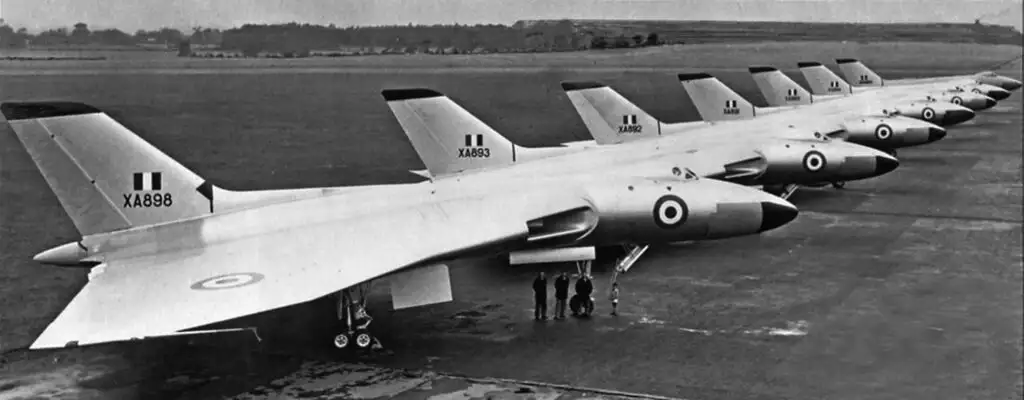
The loss of XA897 left 230 OCU with just one aircraft, until the arrival of XA898 in January 1957. Three more aircraft were on strength soon after, allowing the first OCU course to graduate on 20 May. Pilots and co-pilots came from a tour on Canberras, experienced in flying jets at high speeds and altitudes, and once use to the Vulcan’s size had little difficulty adapting to the big delta. OCU training started with four weeks of ground school, and towards the end of this pilots would spend 16 hours on the flight simulator, before moving to mixed ground school and flying for two weeks. The final phase was an intense six weeks of flying, by the end of which pilots would have around 50 hours on type, half of it at night.
Navigator Plotters and Navigators Radar also often came from Canberras, though some had experience on Lincolns or Washingtons. The new systems on the Vulcan meant their workload was high, with the ‘Green Satin’ radar aid and new bombing systems with H2S radar to master. The third crew member, the Air Electronics Officer, was a new category, and the course was possibly the most intensive of all with a great deal of electronic theory to absorb. This would stand them in good stead as electronic countermeasures began to emerge, systems that would double an AEO’s workload in operational conditions!

Dr Steve Liddle CEng FRAeS, is a Vulcan to the Sky Trustee and Principal Aerodynamicist at Aston Martin Formula One Team. The articles here are
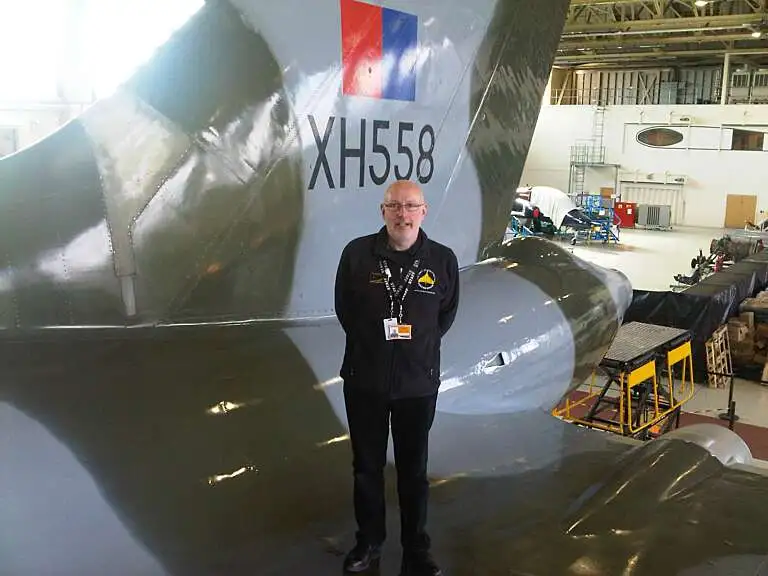
Former engineer and Vulcan tour guide Steve Ware has always been fascinated by the world of aviation, and more so with one aircraft in particular
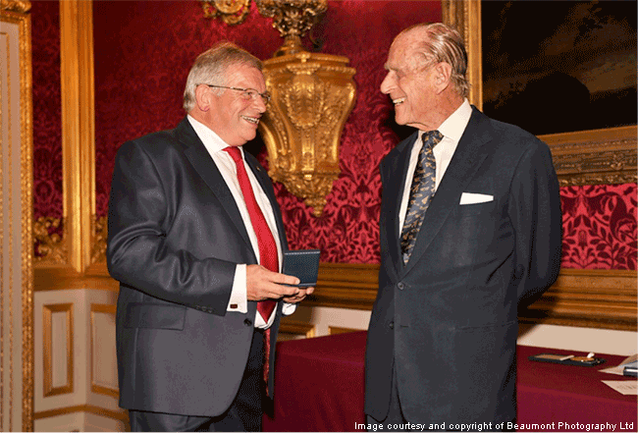
There are many links with the Royal Family and the Avro Vulcan. Prince Philip, the Duke of Edinburgh, was honorary Patron of The Air League
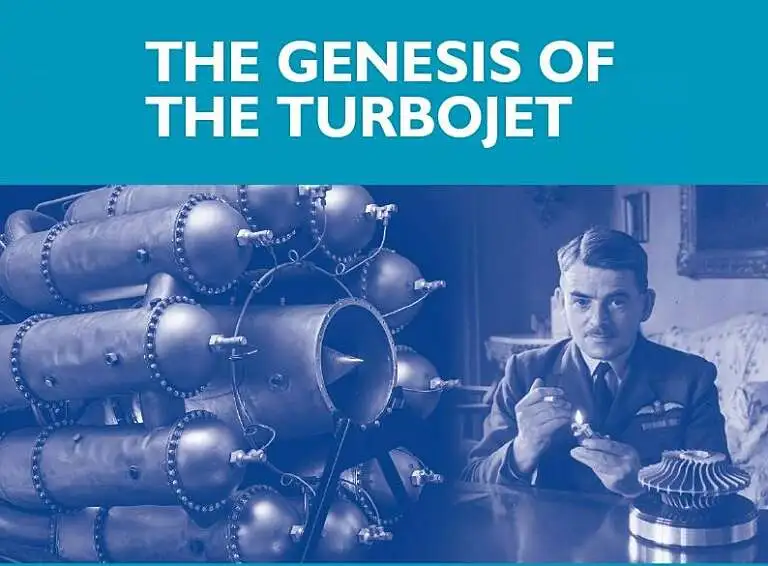
Rolls-Royce and others become involved… In January 1940, Whittle had met Dr. Stanley Hooker of Rolls-Royce, who in turn introduced Whittle to Rolls-Royce board member